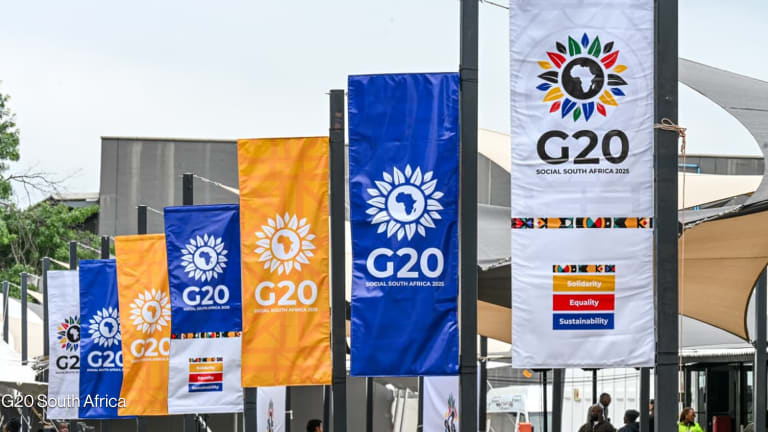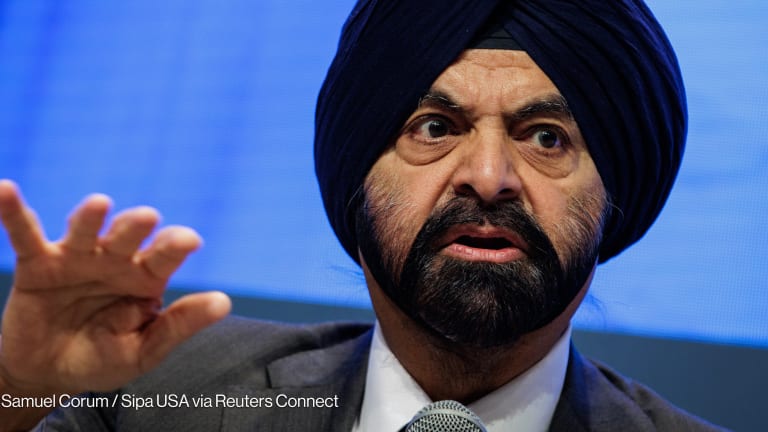
The “development world,” which may be referred to as a world in it’s own right, has witnessed yet another high-level gathering at a “critical juncture” in global development. As this term appears in almost any outcome document of any conference, you keep wondering whether there is any road in between the junctures. There are always running-ups. And despite Paris firing a gunshot for the start of a race, the Accra Agenda for Action exposed that the development pack was difficult to mobilize.
At a recent presentation of the Human Development Report at the Netherlands’ Ministry of Foreign Affairs, there was hardly any mention of the Fourth High Level Forum on Aid Effectiveness in Busan. All that counted was Rio+ (coming up in 7 months). So then, what do all these “junctures” offer in terms of alternative pathways? Or are they only meant to “be consistent with”? And more importantly: What do these statements offer to people in need?
Donor language
It is worth reading the draft outcome statement of the sherpas (interesting Tibetan term for loyal hard-working community members, which apparently also applies to top negotiators drafting documents for meetings like this). You will come across a nice list of terms, but the majority of voters will wonder how they connect to the day-to-day challenges they face.
Complex architecture, triangular cooperation, vehicles for development, Monterrey, financing for development, our dialogue, uneven progress, implementation in full, commit to modernize, embrace diversity, recognizing distinct roles, common set of principles, lessons to be shared, diverse approaches to development, South-South, North-South, achievements and innovations, unique characteristics and respective merits, playing a catalytic and indispensable role, reaffirming commitments to scale up, examining interdependence and coherence, expanding domestic capital markets, inclusive development, taxation, domestic resource mobilization, aid for trade, non-concessional public funding and climate change finance, new financial instruments, investment options, technology and knowledge sharing and public-private partnerships.
The above sums up half of the second page of the outcome statement. Just a sample of the 36 articles produced, of which 35 already existed on Nov. 28, before HLF4 commenced in Busan. Article 2 was the only late addition to the final outcome document. Hence, this article requires close scrutiny. What do we read?
2. The nature, modalities and responsibilities that apply to South-‐South co-operation differ from those that apply to North-‐South co-‐operation. At the same time, we recognise that we are all part of a development agenda in which we participate on the basis of common goals and shared principles. In this context, we encourage increased efforts to support effective co-‐operation basedon our specific country situations. The principles, commitments and actions agreed in the outcome document in Busan shall be the reference for South-‐South partners on a voluntary basis.
What does this mean?
Interestingly, the plea I made in my contribution to the Brokers debate on the role and shape of knowledge in Dutch global relations management is confirmed by the appearance of this very article in the outcome statement. I suggested to do away with donor-forged “South-South” terminology as well as other groupings like DAC and BRIC (which stands for the emerging economies of Brazil, Russia, India and China). Here is the reason why: The Busan outcome document became obsolete as a result of the inclusion of article 2, which uses such “masking” language. This article allows any government to voluntary accept or reject the outcome statement as a point of reference for domestic and international decision-making. It just depends where you locate yourself — in “the North” or “the South.”
Differential commitments
So, where’s China? In “the North” or the “the South”? And what about Russia, Brazil, India, the Middle-East, et cetera? The OECD-Development Assistance Committee was happy to include the BRICs. However, article 2 provides the escape goat for any unwilling government (with the exception of those that have considered themselves for years to be part of “the North” — including Australia, but also Italy, which is rapidly confirming it’s southern connotation). This continued differentiation in North and South in article 2 I consider the Achilles heal for the nicely eluded “new partnership that is broader and more inclusive then ever before” (Article 1). It is all about “differential commitments for effective international development,” as the same article concludes. So, commitments may be different from country to country.
Civil society in a deadly embrace
And what about civil society? It has effectively sidelined itself by the addition of one phrase in article 22a that I presume was added as a result of advocacy efforts of civil society organizations. CSOs were assigned the role of “independent development actors,” as the article reads in its final version. This phrase was not included in an earlier draft of the document.
What does independent mean in this case? I always believed CSOs saw themselves as negotiators, each representing a certain interest groups — the very reason why, in my view, CSO representation is fictitious, except when it comes to advocating for civil society space itself. Apparently, the participating CSOs have been dissolved instead into an amalgam of inclusiveness and embrace of diversity, dismantling civil society in the process.








